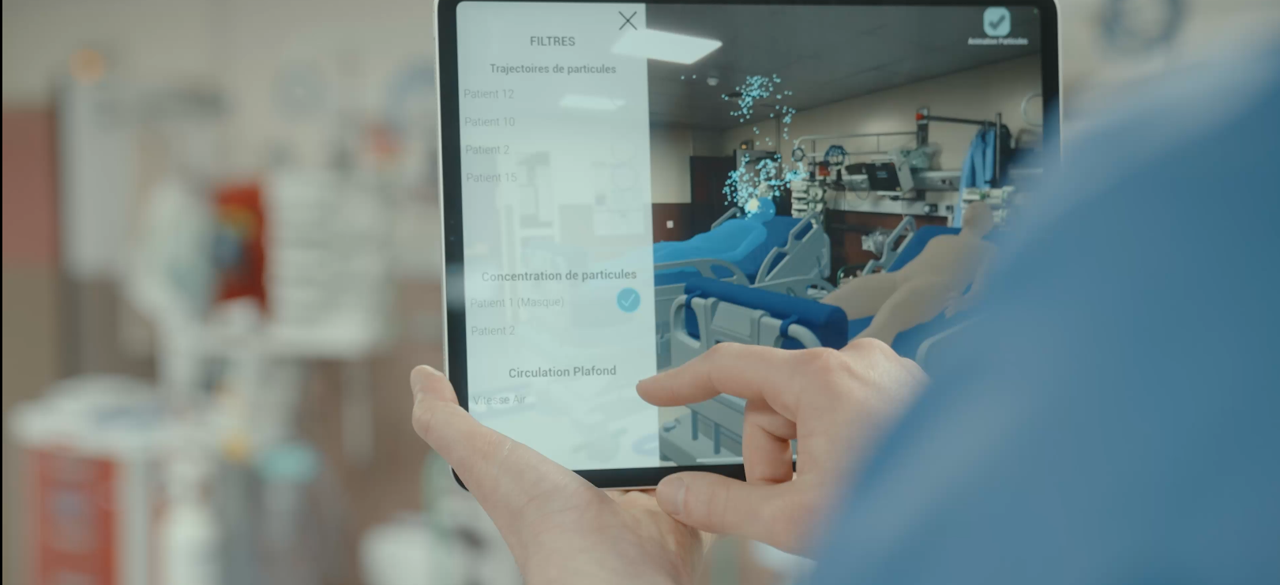Saint-Louis Hospital AP-HP
Innovative training powered by augmented reality and virtual twin technology transforms infection prevention, equipping professionals with immersive tools to reveal the invisible.
Innovative training with AR for healthcare professionals
Healthcare professionals at Saint-Louis Hospital – AP-HP in Paris are taking part in innovative training to improve their understanding of infection prevention. Instead of sitting through traditional lectures, they take part in a hands-on learning experience, stepping into their own work environment with tablets in hand. Here, they see virtual patients breathe and cough, revealing hidden risks that were once undetectable. Through virtual twin powered augmented reality (AR), airflow patterns are illuminated before their eyes and they understand, perhaps for the first time, the true impact of airborne infections in open care spaces.
This revolutionary training method based on Sense Computing is the result of a collaboration between Saint-Louis Hospital AP-HP and Dassault Systèmes, using advanced simulations to transform how healthcare professionals perceive and mitigate airborne transmission risks. By integrating virtual twins and AR into professional training, the hospital is bridging the gap between theory and practice, empowering staff to make informed decisions that enhance patient safety.
“Augmented reality brings infection prevention training to life in a way that traditional methods can’t,” said Dr Guillaume Mellon, Attending Physician, Head of Infection Prevention and Control Team at Saint-Louis Hospital - AP-HP. “With an iPad in hand, professionals can move through their workspace, see how airborne particles travel, and truly grasp the risks in real time. This hands-on experience makes training more engaging, memorable, and impactful.”
Saint-Louis Hospital AP-HP has a history of embracing technological innovation in partnership with Dassault Systèmes. In 2022, the two organizations collaborated on a project to simulate airflow dynamics in a dialysis unit as part of an initiative to prevent the transmission of respiratory viruses between immunocompromised patients (Mellon et al. Enhancing the control of respiratory virus spread: a comprehensive approach integrating airborne virus detection, aerological investigations, and airflow modeling for practical implementation). The simulations presented invaluable insights into the impact of ventilation system maintenance.
Building on this success, the hospital’s infection prevention and control team, known as ESPRI (Equipe de Surveillance et de Prévention des Risques Infectieux), launched a new initiative to model airflow within a post-surgery unit. This time, the goal was not just to study airflow patterns but to use AR-driven simulations to create an immersive training experience. Traditional training methods often rely on passive learning through lectures, which can struggle to capture the complexity of real-world environments. By incorporating AR, the team has developed a hands-on approach that strengthens understanding and fosters a deeper level of professional engagement.
“In lectures, we’re just presenting a theory to the team, which can feel abstract and disconnected from their daily work,” Mellon said. “With this new approach, healthcare professionals can learn within a tangible care space that is familiar to them.”
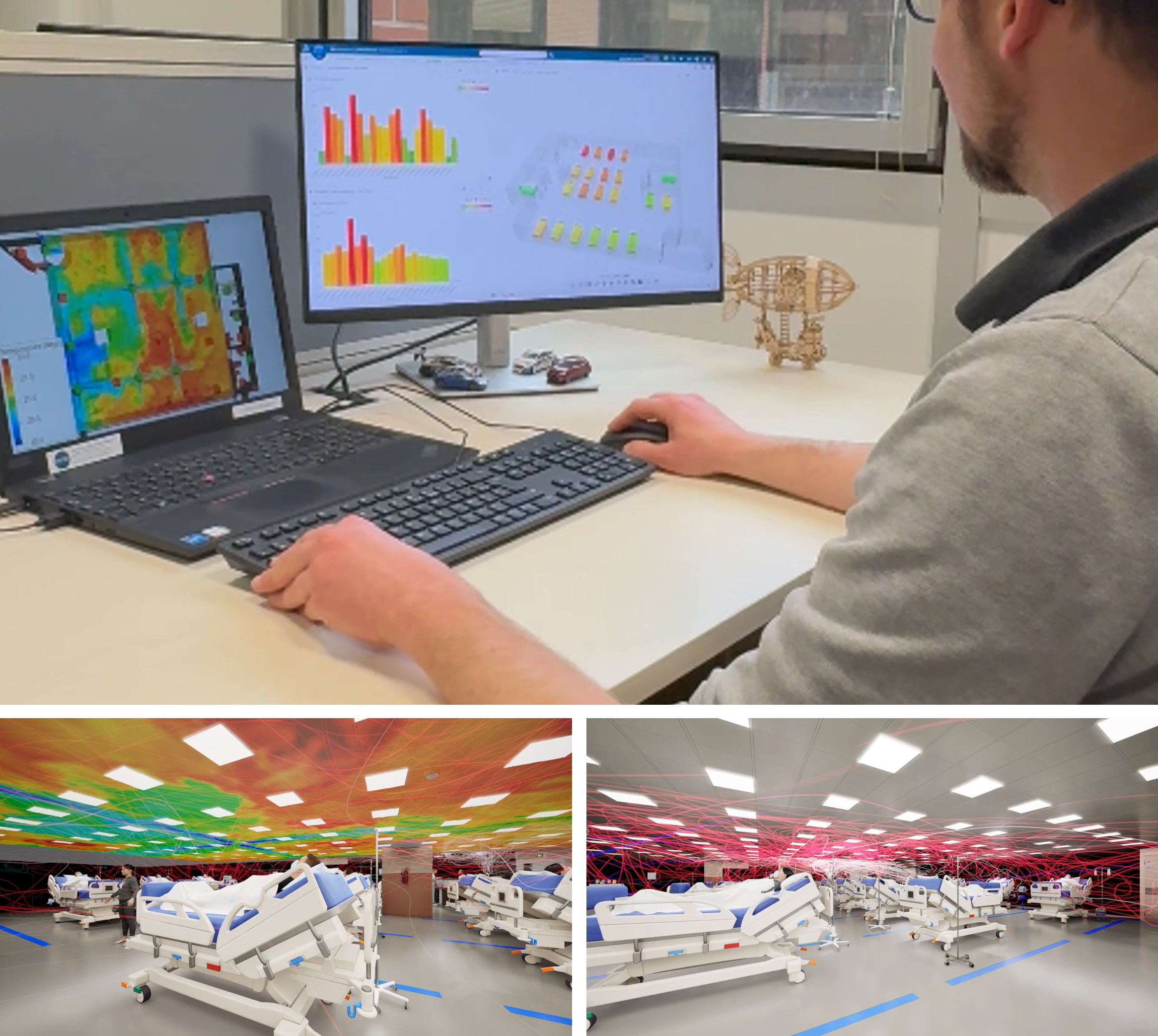
Knowledge gap in respiratory cross-transmission risks
Respiratory infections are a significant issue in healthcare settings, ranking among the top ten hospital-acquired infections. The challenge is particularly pronounced in open care spaces, where airborne particles can spread more easily in the shared environment.
A hospital-wide survey conducted by ESPRI revealed a concerning lack of awareness about how airborne infections spread in these open care spaces. This gap in understanding was likely due to a lack of regular and practical training opportunities tailored to these risks.
“A survey of 300 healthcare professionals, including doctors, nurses, and administrative staff, revealed limited knowledge of the risks of respiratory cross-transmission, with fewer than 20% answering a question about it correctly,” Mellon said. “This prompted the adoption of an innovative educational tool to enhance risk awareness.”
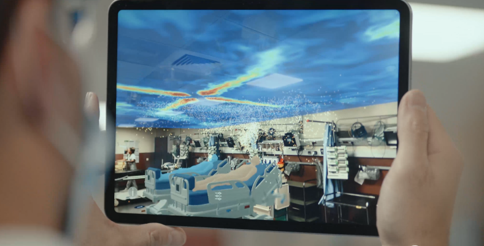
Modeling virus transmission in open care spaces
Saint-Louis Hospital AP-HP expanded its collaboration with Dassault Systèmes through its Virtual Twin as a Service (VTaaS) approach, which provides healthcare teams with advanced modeling and simulation without the need for in-house technical expertise. Delivered through a cloud-based subscription, VTaaS gives organizations access to Dassault Systèmes’ decades of experience in virtual twin technology, providing accurate insights on time and within budget, all without the risks and complexities of building simulations from scratch.
The modeling process took into account numerous variables, such as the ventilation system’s design, the placement of patient beds, and the potential spread of respiratory particles within the unit. Dassault Systèmes then developed realistic simulations using SIMULIA Fluids solutions to quantify the potential presence of respiratory particles between patients and their bed placement in the room, seeing who might emit and receive particles and how the design of spaces and ventilation systems influenced localized risks.
“For respiratory cross-transmission, it is more difficult to realize the risk of becoming infected,” said Dr Emmanuel Dudoignon, intensive care unit physician at Saint-Louis Hospital - APHP. “The virtual twin and augmented reality make it possible to visualize the risk linked to transmission and aero-bio-contamination.”
The simulations demonstrated that in the 300-square-meter space, both patients and healthcare staff are at heightened risk of exposure, underscoring the need for vigilance and effective strategies to mitigate respiratory particle transmission. Professionals were struck by the realization that respiratory particles could travel across a room as far as 25 meters. The experiment showed that particle diffusion isn’t confined to the immediate patient area but spreads throughout the space, reinforcing the importance of well-designed ventilation and protective measures.
Compared to Dassault Systèmes’ earlier work, this project achieved an even more accurate depiction of the spread of particles and airflow thanks to additional details incorporated in the virtual twin, including more patients and updated HVAC (Heating, Ventilation and Air Conditioning) system specifications. The simulations clearly showed how patients were exposed to a greater or lesser risk of contracting a respiratory infection depending on their specific location in the unit. These insights have significant implications for patient placement and infection control strategies.
“We now know that certain areas in the recovery room carry a higher risk of respiratory infections," Dudoignon said. “When placing invasive devices like central lines for chemotherapy in immunocompromised patients, this insight helps us avoid high-risk zones and position patients in areas with a lower chance of respiratory cross-transmission.”
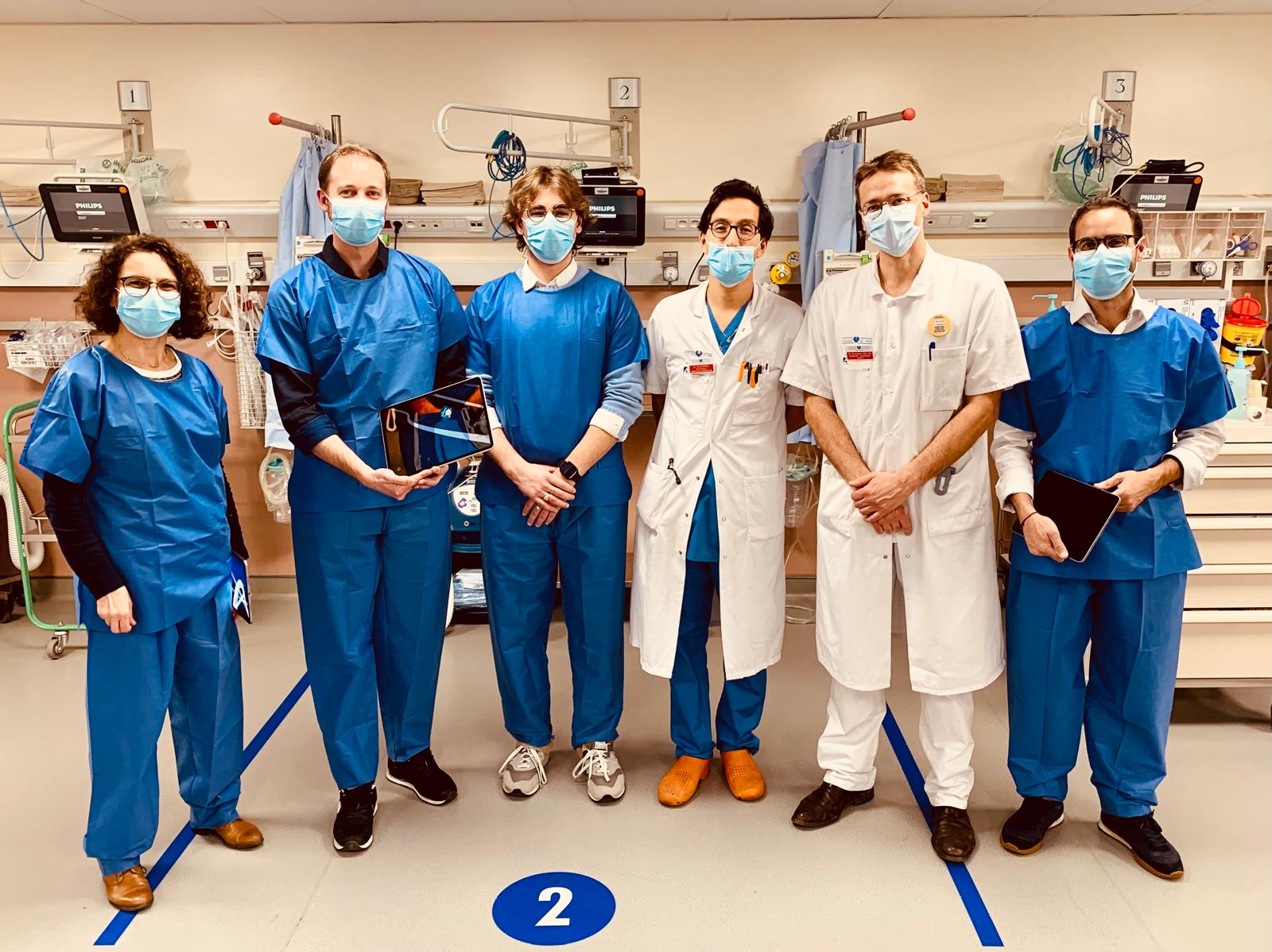
Augmented reality adds new dimension to training
Saint-Louis Hospital AP-HP is in the process of rolling out its pilot training program with the AR tool, developed using 3DEXCITE for achieving highly realistic visualizations. Healthcare professionals are now able to experience a fully interactive training session, where they can explore different scenarios that illustrate the spread of respiratory particles under various conditions.
“With the airflow measurements taken beforehand – ventilation speeds, extraction rates, and air circulation patterns – we were able to integrate all this data into a tablet-based tool,” Mellon explained. “This allows us to create training scenarios featuring virtual patients in the space, comparing the effects of different conditions, such as whether or not a patient is wearing a mask.”
The AR training method enhances retention and engagement by allowing participants to interact with their environment in real time. Professionals can move through the space, observing how respiratory particles behave and how preventive measures can mitigate risks.
“Before, we had very few tools to illustrate air contamination risks,” said Professor Benoit Plaud, Head of the Anesthesia and Surgical Intensive Care Department at Saint-Louis Hospital - AP-HP. “The collaboration with Dassault Systèmes has allowed us to develop an innovative educational tool that uses augmented reality to give healthcare professionals a tangible understanding of how air contamination occurs, whether from patients or caregivers, by directly visualizing airflow in open care spaces.”
The successful integration of AR into training has reinforced the hospital’s commitment to leveraging advanced technology for infection prevention. As the pilot program moves forward, the team is optimistic about its potential to improve practices and patient outcomes.
“This has been an enriching and conclusive experience on every level,” Mellon said. “I truly believe we’ll see meaningful improvements in practice as a result. Throughout, I’ve been delighted with the collaboration with Dassault Systèmes – fast, efficient, and full of discoveries.”
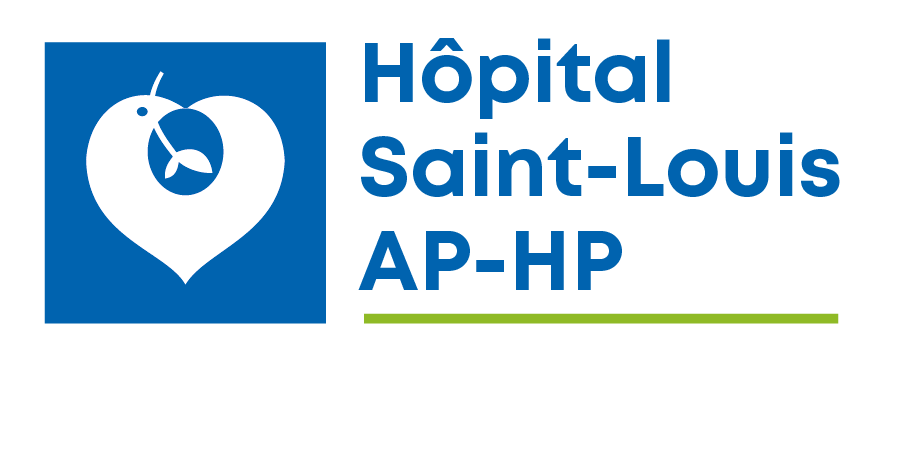
Focus on Saint-Louis Hospital AP-HP
Saint-Louis is a quaternary care academic public hospital, part of the Assistance Public-Hôpitaux de Paris (AP-HP) Group. The hospital specializes in a large number of medical and surgical disciplines, including hematology, cancer and dermatology, as well as infectious and tropical diseases, and inflammatory diseases.
For more information: https://hopital-saintlouis.aphp.fr
